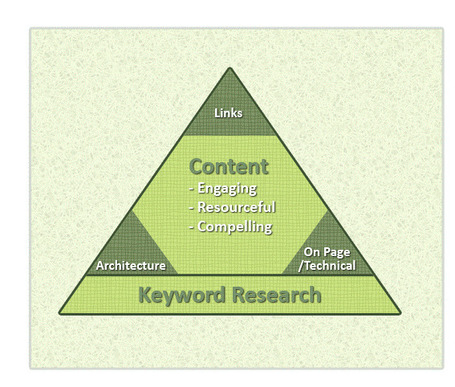How to SEO on the right side of Google in 2013 - Fourth Source
I believe that engaging content should be at the heart an SEO plan with keyword research as its foundation. The other elements are still vital and form the core structure, however the focus is on the former should the structure be correct (which is still very important).
1. Build the right foundation. It may be tempting to start doing SEO without carrying out an in-depth Keyword Research phase but this can be one of the biggest mistakes that people make, especially as the search terms are the foundation of all our “SEO” work going forward.
2. Using Keyword Groups or supporting keywords can be much easier to achieve your overall goal. Optimising and including keywords which support an overall high volume and broad keyword achieves the same goal but with far less competition and more ease. For example, ranking for “best architect in surrey 2013” will be much easier to achieve than “architect” or “best architect” but they all work together to optimise for the head terms and can show success along the way to achieving your main goal.
3. Get focused! Treat it as if you are initiating a sales call and you are trying to identify whether this potential customer is wasting your time or not. You increase the chance of a sale by using qualifiers. In the sales world it’s the four W’s – Who, What, When, Where, but relating it to search these still apply.
4. Take it to the Tools. Once you have brainstormed with the broad and targeted keyword areas along with the qualifiers, this is when you can take it to the keyword tools. There are obviously many tools available and we all have our own personal favourites but my favourites include Adwords Keyword tool, Keyword Spy and Ubersuggest which uses Google’s autocomplete data to suggest keywords.
5. Make your case. When I’m trying to find out how hard it will be for a client to rank for the chosen terms I use a few tools but I always start by running a few manual search queries on the terms to see what the competition is like. I go into Google and search for a few terms taking down the top competitors and collecting their URL’s to take into Moz’s opensiteexplorer comparison tool (OSE).
—————
.png)

